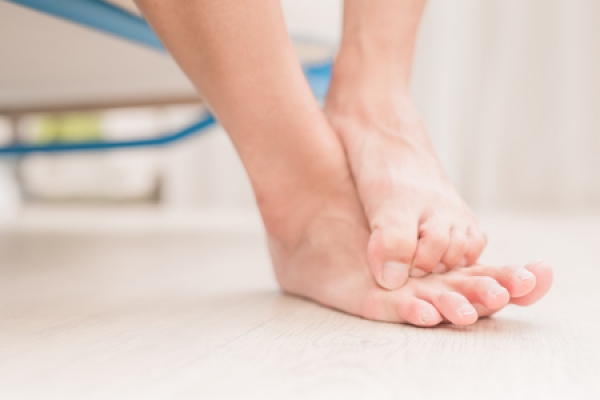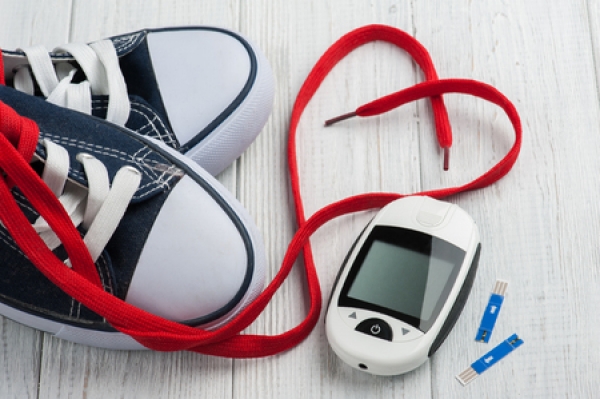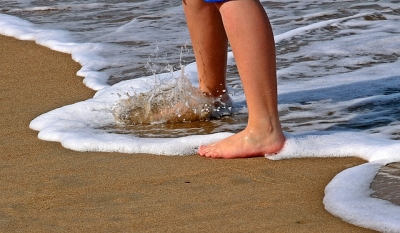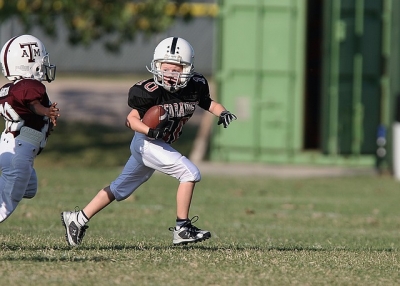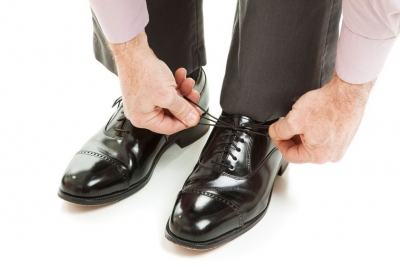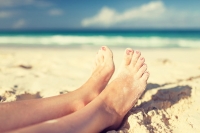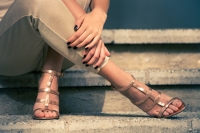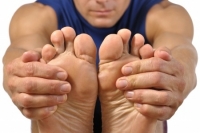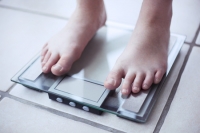Connect With Us
Blogs
Blog
Children categories
During the month of August, we at Superior Foot & Ankle Care Center recognize Psoriasis Action Month. Psoriasis can appear on your legs and feet as well as on other parts of your body. Below are some facts about this condition and what can be done about it.
FACT: Psoriasis is a chronic disease of the immune system. It manifests most often as a skin condition. In people with psoriasis, new skin cells come to the surface too rapidly. This results in an inflammation of the skin.
FACT: It’s estimated that 8-12 million Americans currently suffer from psoriasis.
FACT: Psoriasis often first develops in patients between the ages of 15 and 25, but can strike at any age.
FACT: Researchers believe that the cause of psoriasis is a combination of an inherited genetic tendency for the disease combined with exposure to certain external triggers. Several possible triggers have been identified, including stress, certain medications, an injury or infection. Triggers are not the same for each person.
FACT: There are multiple types of psoriasis and they can appear differently on the skin. Thick patches of skin, redness, blisters, and lesions are some of the possible symptoms. Psoriasis may cause itching and pain.
FACT: Psoriasis can also cause inflammation and pain in your joints, tendons, and ligaments. About one in three patients with psoriasis develop psoriatic arthritis.
FACT: Patients with psoriasis are at an elevated risk for contracting other conditions like cancer, cardiovascular disease, depression, osteoporosis, liver disease, diabetes, and more.
FACT: On your feet and toenails, psoriasis may look like athlete’s foot or fungal toenail infection. For this reason, if you notice any unusual changes in your skin or toenails or you are experiencing unexplained joint pain, contact our Long Beach office by calling: (562) 420-9800 for an appointment. Our podiatrists, Dr. Victoria M. Foley or Dr. Constance Ornelas will examine your feet and determine whether an infection, psoriasis or some other disorder is the source of your discomfort.
At Superior Foot & Ankle Care Center, we know that diabetes can affect your skin, joints, and bones in a number of ways. Two conditions associated with the disease—peripheral arterial disease (PAD) and neuropathy—are of particular concern when it comes to your lower extremities. PAD is a narrowing or blocking of the arteries to your legs, which can lead to poor circulation. This means that nutrient and oxygen-rich blood necessary for healing cannot reach your legs, feet, and toes as quickly as needed. Neuropathy is nerve damage that can result in loss of feeling in your feet, which makes it difficult to perceive pain and injury. This double whammy means that patients with diabetes are at a higher risk for a host of podiatric problems, including:
- Ulcers and wounds that do not heal properly
- Fungal infections
- Hammertoes
- Ingrown toenails
- Corns and calluses
Difficulty healing can cause even minor foot and toe problems to become major threats with the potential for infection and even amputation. Below are some ways you can be proactive in preventing foot problems if you have diabetes:
- Control your blood sugar. Follow all your doctor’s instructions for managing your diabetes. Watch your diet, take your medications as directed and regularly test to make sure you are on track.
- Schedule regular podiatric checkups. Our podiatrists, Victoria M. Foley or Dr. Constance Ornelas, will work with you to prevent potentially dangerous foot issues. Seeing the foot doctor regularly will increase the chances of catching injuries and infections in their very early and most treatable stages. The podiatrist can also help with nail care, wound debridement and diabetic footwear and orthotics.
- Keep feet clean, warm, and dry. Wash daily and dry thoroughly—especially between your toes. Use a foot powder before putting on socks.
- Make sure shoes fit correctly. Avoid styles that have narrow toe boxes are that are made of very stiff materials. Keep the heel height to 2 inches or less.
- Don’t walk barefoot. This dramatically increases your chances of getting athlete’s foot or a fungal toenail infection, which are contracted by direct contact. You are also more likely to step on a sharp object and injure your foot without shoes.
- Conduct regular self-exams—it’s important that between appointments you are checking your feet and toes daily for any signs of rashes, cuts, blisters, bruises, growths or other indicators that a foot problem is developing. If you can’t see your whole foot as a family member or caregiver to assist you. Contact our Long Beach office immediately by calling (562) 420-9800 if you find anything concerning.
At Superior Foot & Ankle Care Center, we know that many of our patients like to relax by spending a day at the beach. However, besides rain, nothing ruins a beach day faster than a foot or ankle injury. Below are some easy ways to avoid foot trouble and enjoy some fun in the surf and sand.
Watch out for Jellyfish—a dead jellyfish that has washed up on the shore through its tentacles can still sting you. If this happens, use gloves to protect your hands and gently remove the tentacles. Apply vinegar or baking soda to help the pain and swelling decrease.
Wear Flip Flops—this is one of the few times that you will hear us recommend flip-flops, but for a beach day, they can help your feet in several ways:
- Getting from the car to your beach blanket, they will prevent the soles of your feet from being burned by the hot asphalt or the sand that’s been baking in the sun.
- For walks on the beach, flip-flops can protect your feet from cuts from sharp shells and puncture wounds from debris hidden in the sand.
- When using the changing area or restroom, flip-flops will keep you from coming in contact with bacteria, viruses, and fungus that cause athlete’s foot, warts, and other
Re-Apply Sunscreen—a water-resistant sunscreen that has an SPF of 15 or higher should be used on the tops and bottoms of your feet if you are laying out on the beach. To be effective in preventing sunburn, it needs to be reapplied every two hours, and after each time you take a dip in the ocean.
Bring Sneakers—if beach volleyball, Frisbee or other active games are part of your idea of fun at the shore pack sneakers in your beach bag. Wearing flip-flops or playing barefoot can increase your risk for an ankle sprain in the shifting sands.
Remember Your Water Bottle—drinking lots of water is not only essential for staying hydrated, it helps you avoid swelling of the ankles and feet which can be painful and make it difficult to fit into your shoes for the ride home.
If your beach day results in an injury, rash or other foot or ankle symptoms, make an appointment at our Long Beach office (562-420-9800) promptly so that our podiatrists, Dr. Victoria M. Foley or Dr. Constance Ornelas can examine your feet and treat any podiatric problems.
During July, we celebrate National Youth Sports Week. As many of our young patients begin to think about conditioning for fall sports, we at Superior Foot & Ankle Care Center would like to share some information about how to protect your child’s feet and encourage safe sports participation.
Start Early
Participating in a sport has many benefits. It helps your child be physically fit and maintain a healthy weight and hopefully inspires them to develop a healthy lifestyle. While it may seem like the start of the school year is still far away, it takes time to get a body properly conditioned for a sport. If your child has spent the summer glued to their phone and video games, it’s essential that they get off the couch and start some regular physical activity. Check with your child’s coach to see if there are specific conditioning exercises that are recommended.
Put Your Best Foot Forward
Before the start of a new sports season, it’s a good idea to get a checkup with one of our podiatrists, Dr. Victoria M. Foley or Dr. Constance Ornelas. You can call our Long Beach office at (562) 420-9800 to schedule an appointment. The foot doctor can do a complete examination of your child’s feet and ankles and also follow up on any previous sports injuries. If there are chronic conditions such as weak ankles or Sever’s disease, the podiatrist can make recommendations for shoe designs and strategies to help reduce discomfort and risk for injury.
Check the Shoes
The most important piece of equipment for any sport is your shoes. Some tips to consider:
- Buy shoes that are designed for the sport that your child is doing. Different sports require different types of movement for your feet, and today’s sports shoes are designed to accommodate the specific moves associated with a particular sport.
- Get your child’s foot professionally measured. Even if your child has played the sport before, chances are they will have outgrown last season’s shoes.
- Don’t buy big—yes, it’s frustrating how often kids shoes need to be replaced, but a snug fit prevents blisters and feet slipping around which, can result in ankle sprains and other injuries.
If you have additional questions about your child’s feet and sports, don’t hesitate to contact us.
At Superior Foot & Ankle Care Center, our podiatrists, Dr. Victoria M. Foley or Dr. Constance Ornelas know that your shoes play a significant role in the health of your feet. Many common podiatric disorders can be caused or made significantly worse by wearing improper footwear. That’s why our podiatrists may ask you to bring the shoes you wear most often to our Long Beach office when you come for your appointment. If you have a chronic foot problem, talk to the foot doctor (contact us at 562-420-9800) about the best styles and brands of shoes for your particular condition. Below are some recommendations for choosing good shoes.
- Start by getting your foot measured by a professional. Some studies estimate that as many as 9 out of 10 people are wearing shoes that are too small for them. Foot size can change as you age.
- You should not be surprised if one of your feet measures larger than the other. This is true for most people. Always buy shoes that fit the bigger foot.
- Shop for shoes at the end of the day—that’s when your foot is at its largest and most swollen.
- Choose shoes with good arch support. This will help prevent heel pain and plantar fasciitis. Wearing shoes that are completely flat like flip-flops or ballet slippers greatly increases your risk of this condition.
- Cushioned and molded footbeds not only feel more comfortable, they act as shock absorbers, reducing the impact of your foot hitting the ground with each step you take.
- Wear the type of sock you will most likely use with the shoes you are buying. If the podiatrist has prescribed a custom orthotic, you also try it on with the shoes.
- Always try on both shoes and spend some time walking around the store to check for comfort and fit.
- Don’t buy shoes that pinch your feet or feel tight anywhere. There is no such thing as a “breaking in” period. Shoes should feel comfortable from the moment you leave the store.
Did you know that children have a higher incidence of fungal foot infections like athlete’s foot and toenail fungus than adults? The reason being that children are not as concerned with where they walk and keeping their feet clean. At Superior Foot & Ankle Care Center we’d like to offer the following do’s and don’ts to parents to help prevent children from contracting a fungal foot infection.
Do: make sure your child has a pair of easy, slip-on shoes to wear at the lake, beach, pool, or any other public place that tends to see lots of water and bare feet. These are the types of places where fungal infections love to lurk, and they are transmitted by direct contact. Even a quick trip to the bathroom or the changing area can result in picking up an infection if feet are not covered.
Don’t: let your child sit in damp socks. If your child has been running around and their feet get sweaty, have them change their socks. A child whose feet tend to sweat excessively may benefit from a dusting of talcum powder each morning before putting on socks.
Don’t: allow your children to wear shoes without socks. Bacteria and fungi can grow in the shoes and combine with the sweat from your child’s feet to cause infection and foot odor. It’s also a good idea to alternate footwear so that shoes have a chance to air out in between wearing them.
Do: tell your child not to share flip-flops or other shoes, towels, socks, soap, or other items that touch another child’s foot.
Do: wash your child’s feet every day with warm water and soap. If you notice redness, dry skin, flaking or blisters, or if your child complains of itchy feet, contact our Long Beach office for an appointment by calling: (562) 420-9800. Our podiatrists, Dr. Victoria M. Foley or Dr. Constance Ornelas, will examine your child’s feet and determine if a fungal infection is present.
Do you have plans to take a vacation this summer? At Superior Foot & Ankle Care Center, we have seen too many patients happily making travel plans only to return a week later with a foot injury or other podiatric problem. Fortunately, many of these issues can be avoided if you take a few simple precautions. Below are five tips for ensuring safe travels for your feet and ankles.
- Take breaks. If your destination is more than an hour or two away, be sure to get up and walk around a bit and stretch periodically. In a plane or train, this is easy enough to do. If you are driving, plan to stop every couple of hours and get out of the car for a short walk.
- Wear compression stockings for long flights. These can prevent deep vein thrombosis and blood clots from forming in your legs by stimulating circulation and keeping the blood flowing to and from your extremities.
- Choose good travel shoes. Save the strappy sandals and flip-flops for your vacation site. Wear comfortable, supportive shoes traveling to and from your destination. Hauling luggage, running for flights and packing/unpacking requires good shoes.
- Check your children’s shoes before you go. Kids grow out of their shoes quickly. You don’t want your first “souvenir” shopping trip to be for new shoes for your child because the ones she has on your trip are too small and hurting her feet.
- Don’t forget to pack the foot care basics. Nail clippers, an emery board, moleskin, bandages, and antibiotic ointment can save the day when it comes to minor foot injuries and preventive care.
If you sustain a foot injury or experience acute pain in your toes, feet, or ankles while you’re away, seek medical attention promptly. Be sure to follow up with an appointment at our Long Beach office (562- 420-9800) when you return so that one of our podiatrists, Dr. Victoria M. Foley or Dr. Constance Ornelas can check your feet and make sure no further treatment is necessary.
Are you comfortable wearing strappy sandals or open-style shoes? If not, does the appearance of your feet have something to do with it? At Superior Foot & Ankle Care Center, we know that several podiatric disorders have unsightly outward signs that can make female patients feel self-conscious about wearing individual shoe styles. Below are some of the most common ones and what you can do about them.
Bunions—a large bump at the base of the big toe is the telltale sign of a bunion. While many patients know how to recognize a bunion, there is a lack of understanding about the condition. A bunion is a progressive condition, meaning it will only get worse over time. That’s why at the first sign of a bunion it’s important that you make an appointment at our Long Beach office (562-420-9800) so that our podiatrists, Dr. Victoria M. Foley or Dr. Constance Ornelas can evaluate it. The foot doctor may want to take an x-ray to use to monitor the progression of the bunion. There are several conservative treatment options available, although only surgery can correct a bunion. The podiatrist will recommend the best treatment based on your individual case.
Haglund’s Deformity—perhaps you know this condition by its more common name—pump bump. A bony enlargement at the back of the heel distinguishes it. When pumps or other shoes with stiff backs rub against the bony protrusion, it can become inflamed and red, causing pain and discomfort. Wearing open-backed shoes and using heel lifts can both help reduce the irritation.
Fungal Toenails—a brownish discoloration of a toenail, along with thickening and crumbling edges can signal a fungal toenail. Although these are often not painful, they are unattractive and can spread to other nails if left untreated. Topical, oral, and laser therapy are all possible treatments for eradicating fungal nails.
You don’t have to hide your feet. If you have a condition that is causing you to want to keep your feet hidden away, contact us and let us help you restore your feet’s natural beauty.
June is a month for celebrating men! At Superior Foot & Ankle Care Center, we want to recognize Men’s Health Month by highlighting some foot infections that afflict men. Studies show that men are less likely to be proactive and diligent about getting medical care. Encourage the men you love to get foot problems treated promptly by our podiatrists, Dr. Victoria M. Foley or Dr. Constance Ornelas. Below are some common podiatric issues men face.
- Haglund’s Deformity—while this condition, known as “pump bump,” it frequently affects men as well as women. Haglund’s deformity is a bony enlargement at the back of the heel that can become inflamed and irritated from the friction of stiff dress shoes and other footwear rubbing up against it. Bursitis can also develop because of Haglund’s deformity. The foot doctor will recommend shoe modifications, including changes in style and heel lifts or pads to help reduce friction. Icing and anti-inflammatory medications may be prescribed to relieve initial pain and inflammation.
- Gout—this painful, arthritic condition that usually strikes the joint at the base of the big toe is seen most often in men, ages 40-60. It is caused by too much uric acid in the body, which crystallizes in the joint. There are several potential sources of gout, and the podiatrist will help men who have suffered a gout attack before tracking down the cause. In many cases, certain foods can trigger an attack, and gout patients may need to avoid shellfish, red meat, alcohol, and rich sauces.
- Fungal Infections—regular exercise is a key component of a healthy lifestyle, but if the gym or community pool is the work site of choice, it’s essential to keep feet covered to avoid fungal infections like athlete’s foot and fungal toenails. These are passed on by direct contact. Places where people usually are barefoot and that are moist and warm are prime breeding grounds.
- Plantar Fasciitis—one of the most frequent causes of heel pain is plantar fasciitis. The plantar fascia is a long band of tissue that stretches along the bottom of your foot. If it becomes inflamed, heel pain may result. Flat feet and poorly fitting or worn out shoes are one common cause of inflammation.
Encourage your man not to ignore foot and ankle pain. Instead, make an appointment at our Long Beach office today by calling: (562) 420-9800 and get treatment before the problem worsens.
It’s a sad fact that 74% of overweight Americans have foot problems. So, while you may wonder what the connection is, at Superior Foot & Ankle Care Center, we know there is a direct correlation between being overweight or obese and the health of your feet. It’s easy to see when you stop and think about it: your feet are carrying the weight of your entire body—the more you weigh the more stress and hard work for your feet. Below are three benefits for your feet to losing weight:
- Less foot pain—excess weight puts strain on your tendons and joints and can cause a flattening of the arch of your foot. This can increase your risk or the severity of several foot conditions, including:
- Plantar fasciitis
- Tendonitis
- Arthritis
- Sesamoiditis
- Gout
Changes and discomfort in your feet can also lead to problems with your back, hips and knees. If you are experiencing pain in any part of your foot, it’s essential that you make an appointment at our Long Beach office by calling: (562) 420-9800 so that our podiatrists, Dr. Victoria M. Foley or Dr. Constance Ornelas can examine your feet and determine the source of your foot problem.
- Prevention of diseases—maintaining a healthy weight can also help lower your risk of certain medical conditions such as diabetes, hypertension and peripheral arterial disease. These systemic diseases can have devastating affects on your feet like neuropathy and circulation problems.
- Greater mobility—the less you weigh, the easier it is to be active. Being active can help in losing and maintaining a proper weight. A regular exercise routine will also help keep foot joints flexible and preserve a full range of motion.
The good news is that it doesn’t require a huge drop in weight to see big results for your feet. For example, for every pound you lose, this reduces the pressure on your knees by up to four pounds. If you are concerned that your weight may be affecting the condition of your feet, contact us today for more information.
More...
During the summer months your feet experience some particular challenges. At Superior Foot & Ankle Care Center we want to alert our patients to some potential foot and ankle problems and ways to prevent them.
Puncture Wounds and Cuts—going bare foot increases your risk of stepping on a sharp object. If this does happen and you sustain a puncture wound or cut be sure to clean it out completely and apply an antibiotic ointment and a bandage. Avoid swimming in lakes or the ocean while the wound remains open to prevent an infection from developing. If the area around the wound starts to feel warm or you notice redness or any pus or discharge, contact our Long Beach office immediately by calling: (562) 420-9800. Our podiatrists, Dr. Victoria M. Foley or Dr. Constance Ornelas will examine your foot and determine if you need treatment.
Fungal Infections—athlete’s foot, fungal toenails and warts are among the bacterial and fungal infections that are spread by direct contact. For this reason, we recommend keeping your feet covered in public places like community pools, gym locker rooms and showers and the nail salon.
Heel Pain—if flip-flops are your summer go-to shoes, you may notice an increase in heel pain. The average pair of flip-flops provides no arch support. Flattening of the arch exerts more pressure on your heel. If this is your footwear of choice, invest in a pair designed with sturdy soles and built in arch support.
Ankle Sprains—unfortunately many other summer shoe styles are also lacking in side, ankle and arch support. While these may be fine for dinner out or a special occasion, be sure not to wear them for extended periods of walking or sports activities as this likely to result in an ankle twisting injury.
Fortunately, a little common sense and smart choices can go a long way toward protecting your feet this summer. If you have foot pain or discomfort, don’t hesitate to contact us for an appointment.
At Superior Foot & Ankle Care Center, we take care of the feet of patients of all ages. This month—Older Americans Month—we want to offer some information for taking good care of senior feet. While it’s true that some conditions are more likely to occur with age, there are still many ways to prevent disabling problems and ensure that your golden years remain active. Below are 5 tips for better foot health for older patients:
- Keep feet clean and dry. Wash feet every day with warm soapy water and dry completely. If you tend to sweat excessively, use an anti-fungal powder each morning and change your socks as soon as you notice that they feel damp. This will go a long way in preventing athlete’s foot and other fungal infections.
- Inspect your feet weekly. Look for changes in shape, color of skin and toenails, lumps or growths, rashes, bruising and swelling. Report anything that seems abnormal to our podiatrists, Victoria M. Foley or Dr. Constance Ornelas so they can evaluate your feet and determine if a condition exists that needs treatment.
- Maintain good circulation. This means not smoking and avoiding standing or sitting—especially with your legs crossed– in one position for a prolonged period of time. Don’t wear tight hose and socks.
- Move it along. Exercise will also help with circulation. In addition, it will keep feet and ankles flexible, maintain good range of motion and control weight.
- Buy good shoes. Roomy toe boxes, soft and flexible materials and a proper fit will help you avoid many common foot problems. Forgo heels that are higher than two inches and rotate your shoes from day to day.
Don’t put off making an appointment if you are experiencing foot pain or discomfort. This leads to an increase risk of falls and the chance that your condition will worsen and require more invasive treatment. Contact our Long Beach office today for an appointment by calling: (562) 420-9800.
Osteoporosis causes a bone fracture in one out of every two women and one out of every four men over the age of 50. Since May is National Osteoporosis Month, we at Superior Foot & Ankle Care Center think this is a good time to talk about this disease, which can have a big impact on the health of your feet.
Although stress fractures can occur due to trauma, accidents or overuse from an exercise or sport, they can also be the sign of weak bones.
What Causes Osteoporosis
Osteoporosis occurs when you lose too much bone, make too little bone or both. Many patients don’t realize that bone is living tissue that is constantly being torn down and built up. There are many conditions and factors that can result in loss of bone strength. These include:
- Age—your risk increases over the age of 50
- Sex—women have a higher risk, particularly post-menopausal women
- Ethnicity—Latinos, Asian Americans and African Americans are more at risk
- Disease—osteoporosis is often associated with other disease, such as diabetes, lupus and rheumatoid arthritis
- Family history of osteoporosis
If you are experiencing symptoms such as pain, tenderness, swelling, bruising or difficulty bearing weight on the affected foot, it’s important that you not put off getting these symptoms evaluated. Make an appointment at our Long Beach office so that our podiatrists, Dr. Victoria M. Foley or Dr. Constance Ornelas can examine your foot and diagnose the problem and its cause. The foot doctor can help determine your personal risk for osteoporosis and whether or not bone density or other tests should be ordered at this time.
Making Choices for Healthy Bones
Fortunately, there are many ways you can help increase bone strength and lower your risk for fractures, such as:
- Get enough calcium—know how much you should be getting each day and increase your intake of s of yogurt, milk, cheese, leafy greens and other foods that are high in this nutrient. Be sure to also get adequate amounts of vitamin D as this is essential for body to absorb calcium properly.
- Exercise regularly—weight-bearing and muscle strengthening build stronger bones. In general, being active can reduce your risk for decreased bone strength.
- Don’t smoke.
- Fall-proof your home inside and out.
Being educated is your best defense against osteoporosis. Have more questions? Contact us at: (562) 420-9800.
At Superior Foot & Ankle Care Center we know that many of our patients enjoy getting professional pedicures but recent stories in the news about fungal and bacterial infections lurking at some salons may leave you feeling hesitant. If you don’t have a salon you trust to follow proper sanitizing procedures, we want you to know that you can give yourself a relaxing and pretty pedicure at home. Here’s how:
- First remove any old nail polish using cotton balls and nail polish remover.
- Fill a small tub with warm, soapy water and soak your feet for 5-10 minutes. Use a nail brush to gently scrub toenails and then rinse feet with clear water and dry.
- Rub a pumice stone or foot file on rough areas of the foot such as the heel and ball. This will exfoliate dead skin and help smooth calluses. If you have large or deep calluses or corns, make an appointment at our Long Beach office and let our podiatrists, Victoria M. Foley or Dr. Constance Ornelas safely remove or trim them.
- Trim toenails straight across and not too short. File the edges with an emery board. Do not curve the edges downward as this can lead to ingrown toenails.
- Gently push back your cuticles with an orange stick. Cuticles that extend from the nail margins can be trimmed using a cuticle trimmer. Do not cut so close that they bleed.
- Apply moisturizer to the cuticles and then the rest of your feet. Give yourself a soothing foot massage, using your fist to rub the balls of your feet and heel. Massage the top of your foot and your toes as well. You can also roll your feet on a bottle or rolling pin.
- Remove excess lotion from toenails with nail polish remover.
Brush on a base coat, then two coats of your favorite color and a top coat. Put your feet up and allow time for nails to dry completely. Enjoy!

